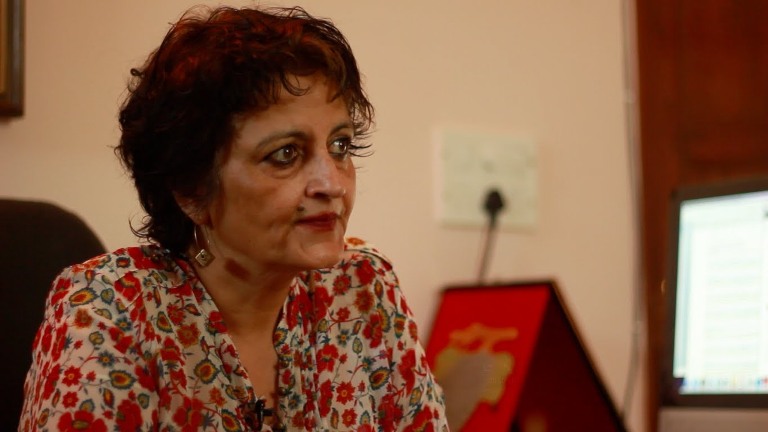SEEMA MUSTAFA
SRINAGAR: The All Parties Hurriyat Conference, with the two factions led by Mirwaiz Umar Farooq and Syed Ali Shah Geelani more united now than before along with JKLF’s Yasin Malik, have been feeling the pressure in Kashmir to one, keep themselves relevant and in control; and two, to ensure that the common folk are not inconvenienced by shut downs beyond a point.
The separatists now better known in the Valley as ‘resistance’ leaders have been working on unity—always a difficult issue for the factions—since the 2010 violence and seem to have achieved this now in the wake of Burhan Wani’s killing. The protests that drew lakhs out on to the streets, even more so in funeral processions, had many unattached civil society individuals urging the Hurriyat to gain control of a sentiment that threatened to turn violent, and go out of control at one point.
The calendar of protests, this time issued not just by Geelani as in 2010 but by all the leaders jointly, was an effort by them to take control of the protests. As senior Hurriyat leaders told The Citizen, “ if we had not taken ownership of the protests, and managed to channelise the anger, the youth would have taken to the gun.”
This is a view endorsed by mainstream politicians as well, including the PDP, that agreed that it was imperative for the anger on the streets post -Burhan Wani to be brought under a leadership. A senior academic and a retired bureaucrat, both moderate in their positions, were categorical that it had been essential for the Hurriyat to take over the protests adding, “if they become irrelevant at this stage, we do not know what will replace them.” This is an opinion widely shared in Kashmir, with elected representatives pointing out that they have become totally irrelevant after New Delhi’s refusal to engage with “all stakeholders” in Kashmir, and all worried about what form the next stage of the protests will take.
Given the strong sentiment in the Valley it was perhaps to be expected that having started the protest calendars the separatist leaders would often find themselves driven by the street. For instance, when a delegation meeting with Geelani sought to convince him of the need to relax the calendar, a slogan shouting mob of youth outside insisted that no such concession be made. Whether this was engineered or not is difficult to say, but it is a fact that sections of the youth insisted on driving the calendar of protests making it very clear to the Hurriyat that any effort to break out of this pressure, would also lead to a street denials of their leadership.
Over the intense four months consumed by a cycle of violence, however, the balance has shifted slightly from the angry protestors to the ordinary folk whose bank accounts have emptied, and who are finding it impossible to function. This includes all of Kashmir actually, with the hardship becoming as one woman entrepreneur said, “impossible to handle.”
The ‘resistance leaders’ met last week with different sections of society. They were a little on the backfoot as the decision to allow the children to sit for the Board examinations had the support of parents across the Valley, and they had not responded as quickly and as positively as many had wanted. This meeting thus, was intended to take the process forward through the realisation that while the anger continues, and actually has moved the Valley to another level altogether, the people need relief to survive.
As a result the Hurriyat leaders, who are now consulting each other constantly and acting more and more in unison, decided to relax the protest calendar. A statement issued by them noted that meetings with a cross section of individuals and groups had convinced them that while there was full support for the protest, “pressing concerns of students and sustenance of certain segments of society greatly affected during the last four months” had to be addressed “while simultaneously carrying our struggle forward.”
Interestingly, the statement also spoke of the “transition” from short term protests to “ long term sustained struggles, programs and modes of protest.”
This arises from the almost 100 per cent support for the last in the Valley, with people differing in analysis and procedural issues, but all agreed that Delhi’s silence and refusal to open a dialogue has left Kashmiris with no choice in the matter. And is pushing the youth in a direction over which, the older generations fear, they will soon have no control at all.
The Citizen

